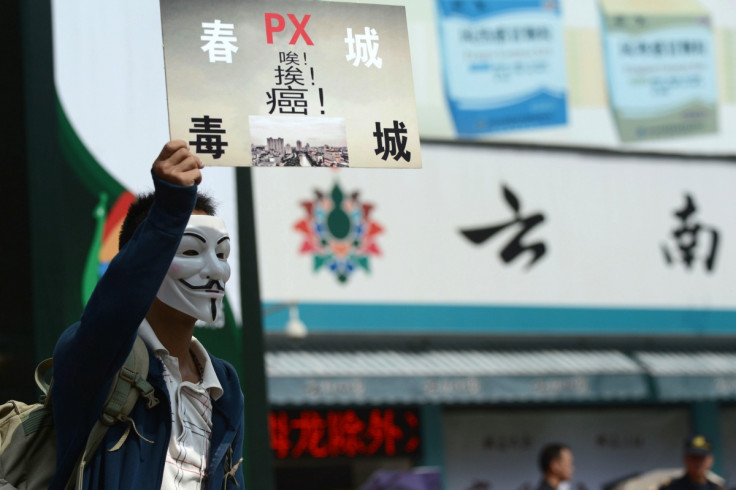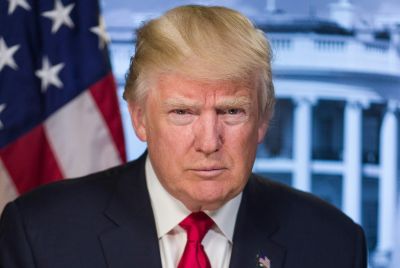How Guy Fawkes went from Britain's most infamous terrorist to anonymous anti-government icon

On 10 February 2008, 250 protesters wearing identical masks stood outside the Church of Scientology in Los Angeles chanting "We are Anonymous" in a rally that was mirrored at exactly the same time in cities across the world. The mask, a ghostly white face with a mischievous smile and curled black moustache, is the visage of Guy Fawkes, a 17<sup>th century British terrorist that the majority of the demonstrators would never have heard of.
There are few in Britain who don't know the story of Guy Fawkes, but outside the country the Catholic plotter who came within hours of blowing up the Houses of Parliament with King James I and the entire political class of England inside it in 1605 is almost completely unknown.
Bonfire Night, when Britons light fireworks and burn effigies of Guy Fawkes on huge communal fires, is a distinctly British affair. Unlike Fawkes' image, which in the last decade has truly gone global. First featured in the 1988 graphic novel V for Vendetta about an anarchist who seeks to overthrow a tyrannical government, the Guy Fawkes mask was later popularised in the 2006 movie of the same name.
I doubt many people in the occupy movement would have too clear a grasp of who Guy Fawkes was but that's probably not important.
The illustrator of the 1988 book, David Lloyd, said that basing the lead character on Guy Fawkes was giving him the image he deserved: "Why don't we portray him as a resurrected Guy Fawkes, complete with one of those papier-mâché masks, in a cape and a conical hat? We shouldn't burn the chap every Nov 5 but celebrate his attempt to blow up parliament," he said in an 2011 interview.
It was adopted by hacktivist collective Anonymous in 2008, and then by the Occupy movement, and would go on to be banned in half a dozen Arab countries including Bahrain, where it was worn by anti-government protesters during the Arab Spring.
In India in 2011, Egypt and Brazil in 2013, and Venezuela in 2014, anti-government protesters donned the so-called "Anonymous masks". Without anyone outside the UK knowing the legend of the man – other than from the movie, perhaps – Guy Fawkes developed a worldwide following some 400 years after his death.
James Sharpe, a University of York history professor and the author of 2005's Remember, Remember: A Cultural History of Guy Fawkes Day, the sudden popularity of Guy Fawkes came as a surprise – although the embracing of the 17<sup>th century Catholic dissident by the radical left was perhaps inevitable. Fawkes' audacious attempt to destroy a repressive, anti-Catholic regime has had resonance with those who oppose state power.
"I doubt many people in the occupy movement would have too clear a grasp of who Guy Fawkes was but that's probably not important. They have just picked him up as an iconic figure associated with going against the government. I think it as simple as that really," Sharpe said.

As to what Fawkes would have made of his sudden popularity amongst the radical anarchist left, it is impossible to say. Little is known about the intention of the plotters after blowing up parliament, and Fawkes himself was brought in because of his explosives expertise rather than his politics. Sharpe says that, if successful, the plot would have been equivalent to the 9/11 attacks and comparisons to contemporary Islamist terrorism do not end there.
I'm always correcting people that he wasn't killed - he jumped off the gallows and broke his neck to avoid being hung drawn and quartered.
"It is always an analogy that I am extremely nervous of making [but], as a conflict that is religiously driven, maybe modern Muslim extremism [could be a comparison]," said Sharpe. "But being appropriated by the right or the left is a peculiar thing to happen to Guy Fawkes. He comes from a totally different historical period. It would be impossible to place Fawkes politically in modern British politics."
The problems with the fetishisation of Guy Fawkes by the left do not end there. In 2011 it was revealed by the New York Times that the surge in sales of Guy Fawkes masks by protesters had netted Time Warner Corporation – which produced V for Vendetta and owns the rights to the image – millions of dollars. As a result, Anonymous took to social media to request that protesters no longer wore the masks that the group had made so popular.
Guido Fawkes
It is not only the far left that have found resonance in Guy Fawkes' audacious attempt four centuries ago to take down the corrupt and repressive English political class. In 2004, a right wing British blogger began publishing a political website under the name Guido Fawkes (Guido being the Italian version of Guy).
Over a decade later and Guido Fawkes – revealed as the pseudonym for writer Paul Staines – has become one of the biggest political blogs in the country. Despite the adoption of Fawkes by the radical left, Staines would argue that got there first – 2004 was a clear two years before the release of V for Vendetta and his image of Fawkes is taken from an old fireworks package.

Known for its scathing attacks on politicians and particularly the Labour left, Staines' Fawkes is an anti-politics figure who is also a "lovable, cheeky chappy [who is] slightly naughty and takes the mickey out of politicians".
As a result, a Catholic activist who came close to wiping out England's entire political class in a single night in 1605 has been reinvented as an irreverent rebel who enjoys making mischief in the corridors of power. Despite that re-invention, Staines is keen to point out that his knowledge of Fawkes goes further than the basics.
"I have more knowledge about him than you might think. I'm always correcting people that he wasn't killed - he jumped off the gallows and broke his neck to avoid being hung drawn and quartered," he said.
But while the appropriation of Fawkes by the anti-establishment left is relatively easy to understand, Guy Fawkes' adoption by the right is less clear. Staines admits that while his blog in 2004 targeted a sitting government and could be argued to be anti-establishment, the blog has become more in line with the government since the election of the Conservatives and their right wing agenda.
"I don't think we are establishment [but] I think we are mainstream. After ten years, we are no longer on the fringes. We're on first name terms with cabinet ministers," said Staines.
Perhaps, then, it is time to retire the Guido Fawkes name? After all, it is difficult to imagine Guy Fawkes being on first name terms with the cabinet ministers of his day. "Well, he would have been if he had won," Staines retorts: "If he had been successful I would imagine he would have been very close to a Catholic monarch."
Remember, remember! The fifth of November...
For Sharpe, it is precisely the irreverence of Fawkes that has caused a generation – whether on the right or the left – to be drawn towards him. The plot may have been an insanely violent and undeniably indiscriminate attack on not only a despotic king but his family members and hundreds of politicians – not to mention the potential civilian casualties in the form of advisers, servants, clerks and passers-by – but its audacity has proved intoxicating.
"What gets me is the sheer, breath-taking immensity of the project. It is a wonder how they thought it up. A couple of people have done calculations and calculated that with the amount of gun-powder down there it would have demolished the palace of Westminster. It would have been a spectacular act of terrorism," Sharpe said.
"We are looking at someone who has happy to take on the government and to take the government down. Which makes for an interesting icon."
© Copyright IBTimes 2025. All rights reserved.






















